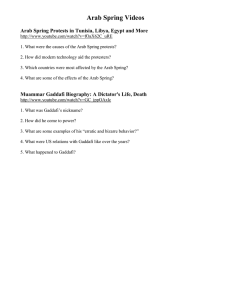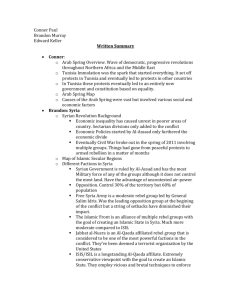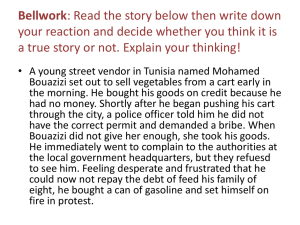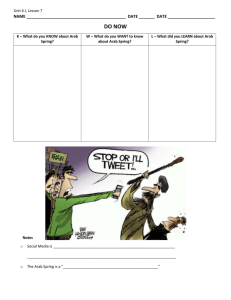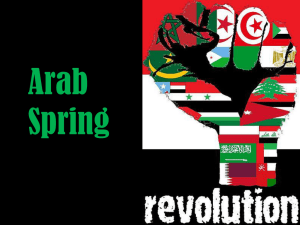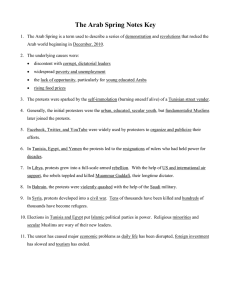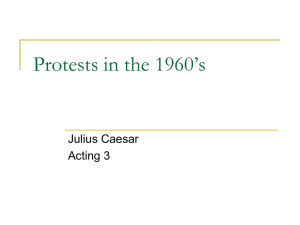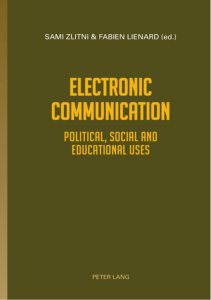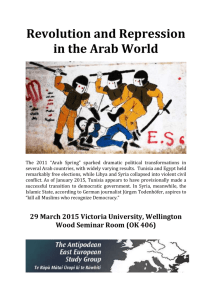How Social Media Affected the Arab Spring complete
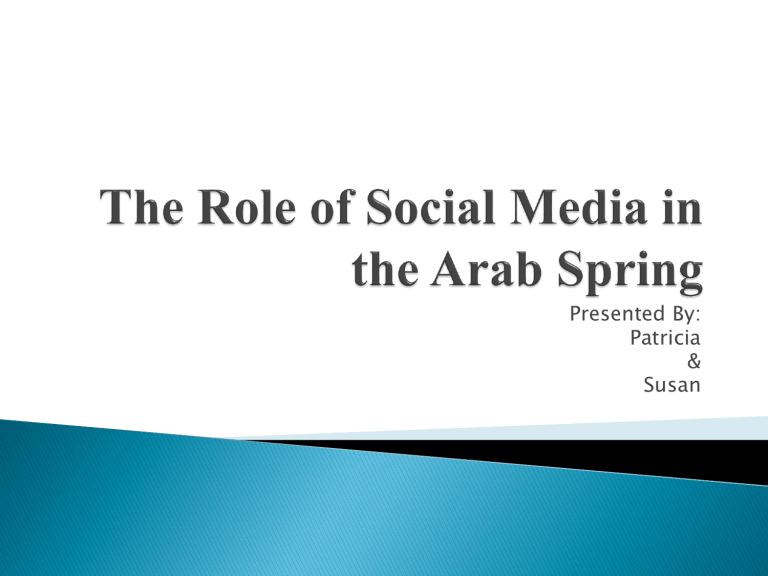
Presented By:
Patricia
&
Susan
The Arab Spring is a revolutionary wave of demonstrations and protests occurring in the
Arab world that began on December 18, 2010
They have protested in Algeria, Iraq, Jordan,
Morocco, and Oman, Kuwait, Lebanon,
Mauritania, Saudi Arabia, Sudan and Western
Sahara
The Arab Spring is known by many names here are some of them:
- The Arab Spring and Winter
- Arab Awakening
-Arab Uprising
Not all participants are Arab
First protest was held in Tunisia on December
18, 2010, which ultimately led to the ouster of Ben Ali.
As of November 2011 Three governments have been over thrown
Dictatorship
Absolute monarchy
Human rights violations
Government corruption economic decline unemployment extreme poverty
Education Factors
Famine
These are some of the actions that take place after the protests:
Living standards
Literacy rates
Increased availability of higher education
Human development index
Better understanding between government and the people
It is unknown as to who was the person who started the Arab Spring
◦ However, Al-Najma Zidjaly, a professor of Oman thinks that a large contribution is made by the new
“Internet-savvy youth” young people that want to see a change in their countries in the forms of more opportunities for education as well as a change in the overall state of conditions. He refers to this as youth quake.
The key countries affected by the spread of protests include Tunisia, Egypt, Libya, Syria, and Yemen.
Overall the use of the social media helped aid in the spread of the news of the protests as well as ways to inspire others from all over the world to join in virtually through the media if they were unable to in real life.
Government had a low tolerance level for the protesters in Tunisia.
Sites like Twitter and Facebook helped support and organize these protests.
The younger generation are more internet literate and for that alone, they have the upper hand.
The Tunisian government has done whatever they could to block these sites to the public.
The government blocks sites through the use of malicious malware to steal private usernames and passwords of the users of these sites.
The protesters have been quick to mock the government's efforts to stifle them -- with slogans like "Free From 404" [internet language for 'file not found']
The use of social media in Egypt, greatly aided in the acceleration of the protests before they were blocked.
If it wasn’t for the social media, a lot less would be aware of the events going on or have enough courage to participate.
The narrative of a situation has a great effect on inspiring our thoughts and decisions.
For example there were instances of making the protesters seem horrible, so that the police have an excuse to clamp down on them.
a New York-based Egyptian blogger interviewed by CNN, suggested as much. She “appealed to the media to not fall for what she described as a
Mubarak regime plot to make the protests in
Egypt seem like dangerous anarchy.”
The narrative was reset. Soon thereafter, CNN changed its on-screen headlines from “CHAOS IN
EGYPT” to “UPRISING IN EGYPT.”
In Libya, Al-Jamahiriya, the Libyan stateowned television channel, was broadcasting nonstop patriotic songs, poetry recitations and rowdy rallies supporting Libyan leader,
Col. El-Gaddafi.
However, despite Gaddafi’s attempts to influence the public opinion to support his rule, his powers only went downhill as he lost control of Tripoli.
During the Battle of Tripoli, Gaddafi continued to broadcast through the radio to help inspire his supporters to crush the rebels.
With the help of airstrikes by both the US and the French, Gaddafi was eventually tracked down in his hometown of Sirte.
Videos and pictures of Gaddafi’s capture and death showed grim and what seemed of him being shot multiple times and abused up till his death.
Syrian government has been doing what they could to crack down on the use of social media
Supporters of President Bashar al-Assad, calling themselves the Syrian Electronic Army.
In contrast to the Mubarak government in Egypt, which tried to quash dissent by shutting down the country’s entire Internet, the Syrian government is taking a more strategic approach, turning off electricity and telephone service in neighborhoods with the most unrest, activists say.
“They are using these tactics to cut off communication for the people,” said Dr.
Radwan Ziadeh director of the Damascus
Center for Human Rights Studies.
This instance has shown how the use of social media hasn’t only helped spread and organize these protests, but it has also helped government monitor activities and stop them in their path. It brings about risks to its dissidents as well.
Leader Saleh has brought a lot of corruption to Yemen
With the lack of democratic reform and the abuse of human rights.
The protests became so chaotic, it led to an attempted assasination where Saleh was injured by the shrapnel resulting from an RPG attack.
When Saleh returned to his place, many were angered.
The news of his return spread through social media like wild fire.
Due to the increased turmoil and increase in violence, Saleh said on October 8, 2011, in comments broadcast on Yemeni state television, that he would step down "in the coming days".
The opposition expressed skepticism, however, and a government minister said Saleh meant that he would leave power under the framework of a
Gulf Cooperation Council initiative to transition toward democracy.
